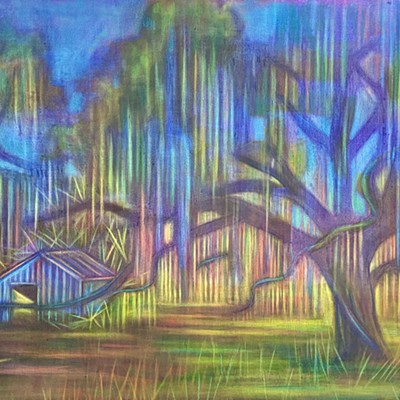A pioneer at a young age, Jonah Bokaer is a force to be reckoned with. His art and career brings a new perspective to the world of dance, combining performing and visual arts backgrounds to provide the means to give back to the professional dance community and help create jobs for other dancers.
It's with nail-biting excitement that the local arts community awaits the debut of his work in Savannah at SCAD's deFINE ART, before Bokaer moves on to present other pieces at the Ludwig Museum of Contemporary Art in Budapest, and the Center for Jewish History in New York.
Bokaer's approach to his craft is unique in its methodology. He relates choreography to the action of design. Following this train of thought, there are periods of discovery, research and development in each idea.
"Choreography, I think, is much closer to design," muses Bokaer. "They share a time-based element, but performance art is usually action and situation, where choreography is movement and tempo."
Choreographed dance, as opposed to other theatrical and performance endeavors, requires exact execution, practice and refinement—often leaving little to no room for improvisation. Much like a well-designed visual piece, Bokaer's performances have a purpose met through the careful sequencing of motions in space. His calculated approach to a fully scripted dance allows for a technical precision that is characteristic of his work.
Trained at Cornell University and North Carolina School of the Arts, Bokaer went on to receive a degree in Visual and Media Studies at the New School, and additional studies at Parsons School of Design and NYU Performance Studies. After 2002, Bokaer evolved into a choreographer and began the career we know him for today.
His early work was heavily influenced by an almost formal approach to the study of movement through animation and digital capture. Bokaer correlates animation to choreography through the shared idea of defining events in a set time frame to achieve a final result.
"It is similar," Bokaer says. "In choreography, you're defining events in time, and there's a set temporality, and then you map it out. It's the same in animation—you're dividing time, and designing with motion in time."
Taking in consideration the passionate and personal nature of Bokaer's choreographies, it's interesting and almost unfathomable to find a foundation in such a technical field as is motion capture and media. As a choreographer and media artist, he creates a middle ground where dance and digital animation meet.
It is not unprecedented for visual artists to endeavor in the world of dance in the areas of set design, props and even costume. However, his approach to the electronic study of movement opens a conversation unparalleled in traditional dance practices.
As his body of work grew, he kept the peculiarity of abandoning the commonly known spaces for dance performances. By adopting the museum as a stage, Bokaer activates a space in a way that invites to the visual appreciation of the surrounding exhibition in a new light.
The Guggenheim and Whitney Museums in New York, MAC Marseille and MUDAM in Luxembourg are only a few of the museums that have hosted or commissioned Bokaer's work.
Each year, a solo and a group performance are debuted and toured. This year, SCAD's deFINE Arts Festival was chosen as the venue for the debut of 2014's solo piece.
Bokaer will be debuting his solo piece "The Rebel (and other myths)" at the SCAD Museum of Art. This piece is based on literature by Albert Camus written during the 1930s for his Théâtre du Travail (later de l'Equipe). His writing contains a theme of resistance and perseverance that Bokaer has skillfully translated into a challenge to human physical endurance.
The first section of the piece—the other myths—will be a series of three eight-hour dances performed by Lilja Ruriksdottir and Laura Gutierrez in the gallery spaces of the SCAD MoA in the three days leading to the final piece. The design of the museum, as well as its curatorial style, allows for interesting experiences.
As the dancers perform across the continuous galleries, the setting around them will change, but not the context of the story told through motion. The different "stages" allow spectators to interpret the story with additional depth. Their relation to and interpretation of the art on the walls will undoubtedly affect their understanding of Gutierrez's and Ruriksdottir's performance.
The second section of the piece—The Rebel—will be a 45-minute solo performed by Bokaer himself at the SCAD MoA Theater. We can only dare to imagine what pushing the limits of physical endurance will mean to a dancer who is not scared of bearing his soul on stage.
In his exploration of physical limits, Bokaer is faced with the challenge of creating a choreography that will be visually pleasing and emotionally exhausting at the same time. He takes pride in defeating the obstacle presented by having to script a piece that will last such a long time.
Bokaer also strives to remain humble in the face of so much fame at such a young age.
"I think the gift is to continue, actually, so it doesn't feel that much like recognition. It just feels like we get to keep working," he says. "It's very rewarding to me to have dancers who have work each year, meaningful work. That feels like one of the biggest signs that we're on the right track."

























